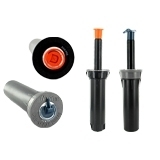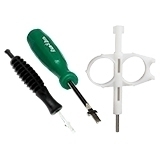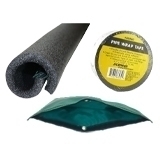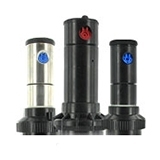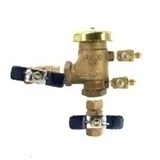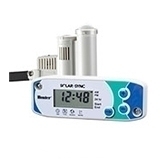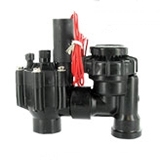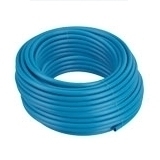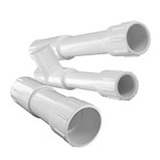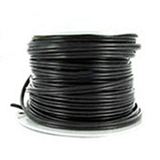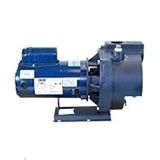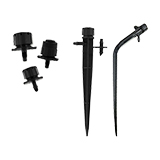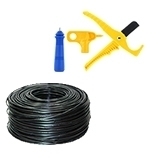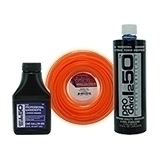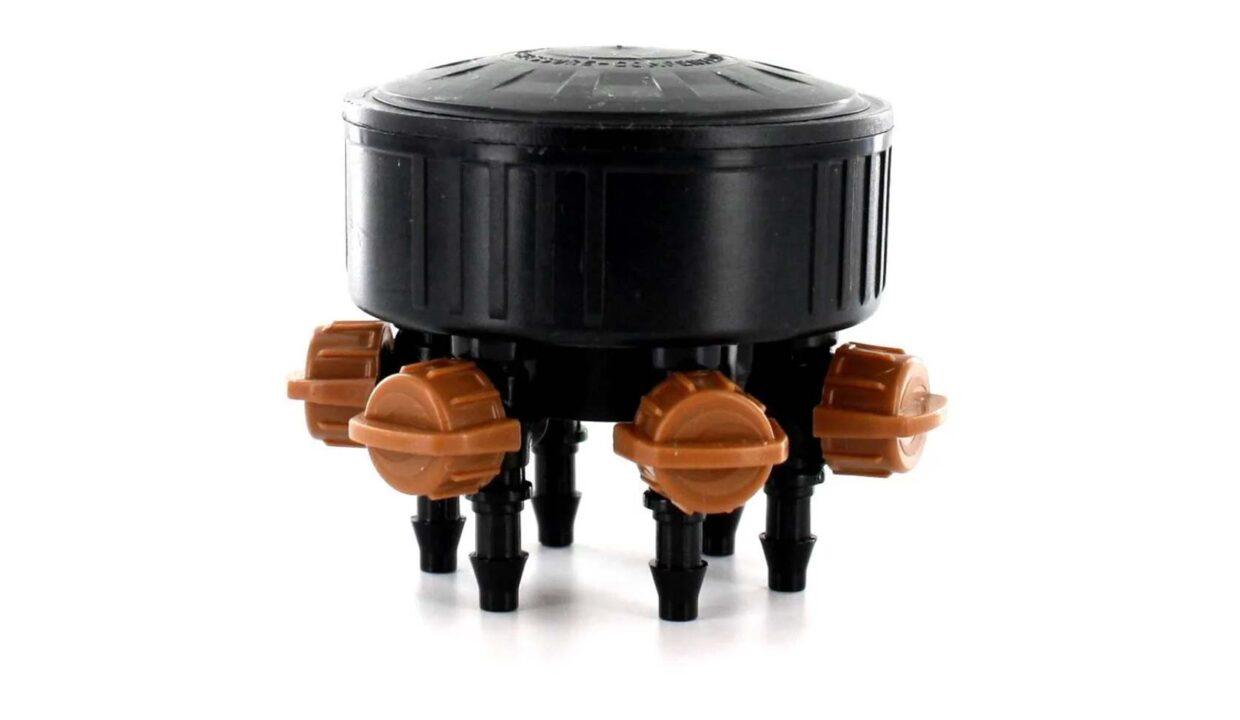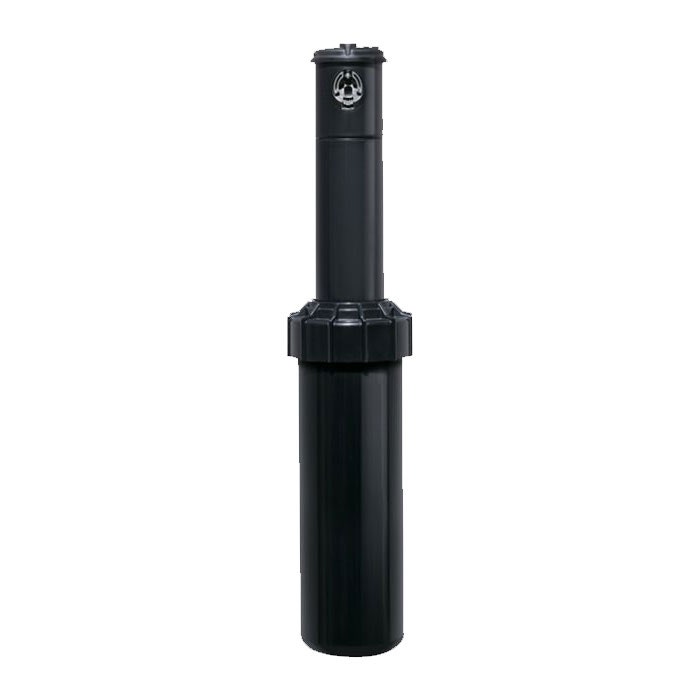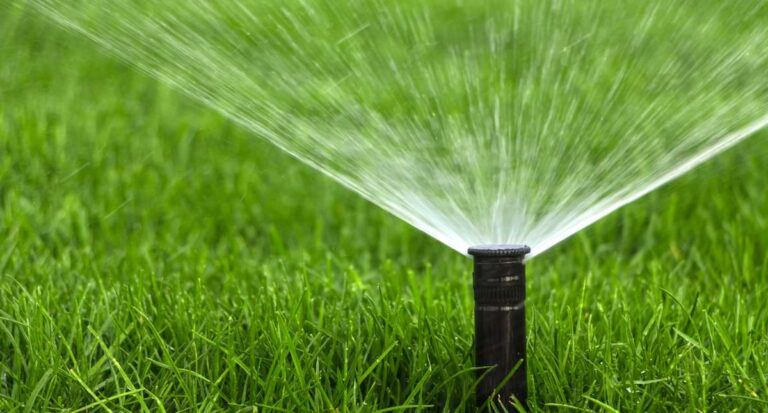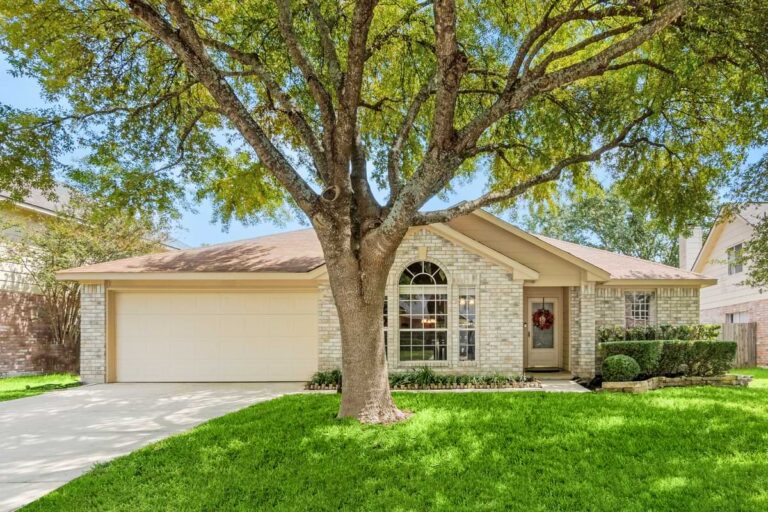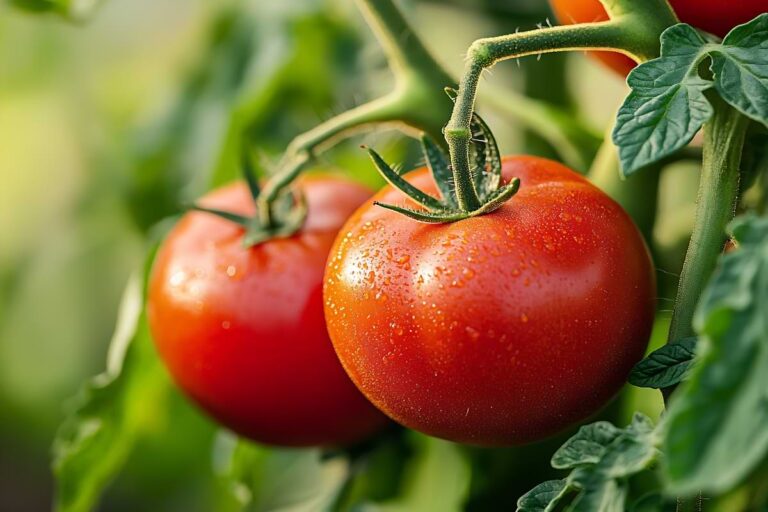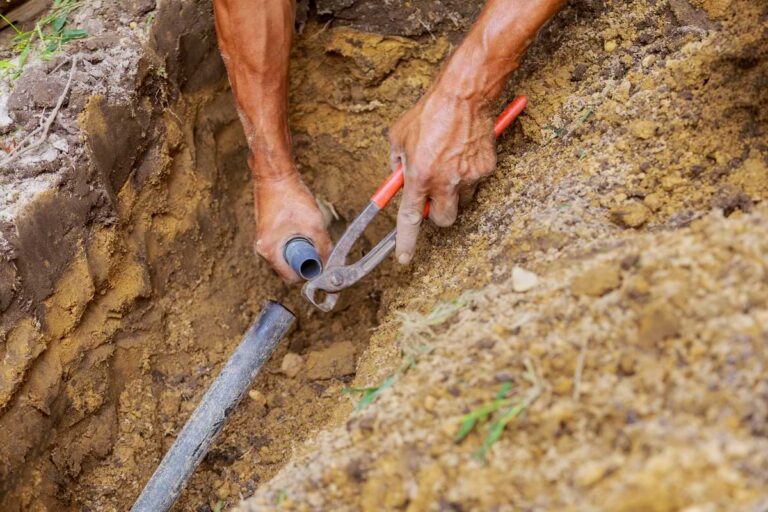Benefits Of A Drip Irrigation Kit
Table Of Contents:
Timely Installation With Drip Kits
Constructing The Ultimate DIY Drip Irrigation System
How To Assemble A Drip Irrigation System
The Drip System Effect
As a leading drip kit irrigation provider, Sprinkler Warehouse has the scoop on how to effectively water your lawn, trees, and garden beds. Drip irrigation systems are an employer’s dream hire – they provide an efficient workflow, they’re flexible, and they can mesh with just about any environment. Drip irrigation, drip tubing, micro-irrigation – what exactly is the secret behind this watering method? Rather than randomly throwing water into the air like rotary systems, drip irrigation systems uniformly distribute a precise water amount to the plant’s root near the soil via drip tubes.
Drip tubing is made from polyethylene and has emitters that are placed at intervals along the tube that correspond with the placement of each plant. This ensures that water is delivered directly to each plant’s root zone, resulting in lower water usage and thereby a reduction in your water utility bills.
In arid locations, drip irrigation is an essential method of maximizing water usage and has been a standard for centuries. Evidence exists that ancient civilizations used clay pots buried in the ground as a primitive method of drip irrigation. The pots would be buried near plants and filled with water. Over time, water would slowly seep from the pots and into the soil.
But, Alas! The ancient days are in our rearview and we have progressive tools and prefabricated kits tailored to save you time and frustration. Cashing in on the drip irrigation action is easier than ever with the variety of available drip irrigation kits for you to B-U-Y and drip irrigation materials for you to D-I-Y.
Plan Before You Plant
Before opening your drip irrigation kit or buying materials to craft your own system, follow these expert-certified guidelines to verify your due diligence is hitting the mark lest you have to redesign or scrap the project entirely.
- Check the legal requirements. Before doing anything, contact your water supplier or municipal water department to inquire about laws, codes, and permits related to drip irrigation systems. In some states, proceeding without the proper permits or supervision can lead to fines.
- Discern your water needs. Sketch a rough map of the area you wish to drip irrigate, dividing the map into several regions based on the watering needs of each plant, levels of sun or shade, and soil types needed.
- Design the layout. If you need more than one drip tube, you can install a lateral line with two or more drip tubes branching from it at various points.
- Divide your garden into watering zones. By installing a zone control valve in each zone, you can navigate water flow to one or two zones at a time. We recommend installing each valve at the center of the zone in order for it to push water out at even pressure in all directions.
It may seem like a huge time commitment, but it will preserve time and money in the long run. Now that you’ve shoved the preliminary planning aside, let’s get to the meat.
Timely Installation With Drip Kits
Running anywhere from $15 to $115, our drip irrigation kits are wrapped in reliability and can benefit business owners, homeowners, and renters. By purchasing a kit from Sprinkler Warehouse, you’re not only getting a solid product, but also you’re getting expert service from one of our helpful customer service representatives.
Are you trying to water challenging terrains such as slopes and oddly shaped areas? Suitable for raised beds, shrubs, groundcovers, flowerbeds, and trees, the GE200 Drip and Micro Sprinkler Kit is one of DIG’s bestselling drip irrigation kits. This drip irrigation kit can cover up to 700 sq. ft and can be expanded to cover more than 1,000 sq. ft. using additional drip tubing, micro sprays, and drip emitters. It’s easy to assemble as this drip irrigation kit requires no special tools or glue to set into motion.
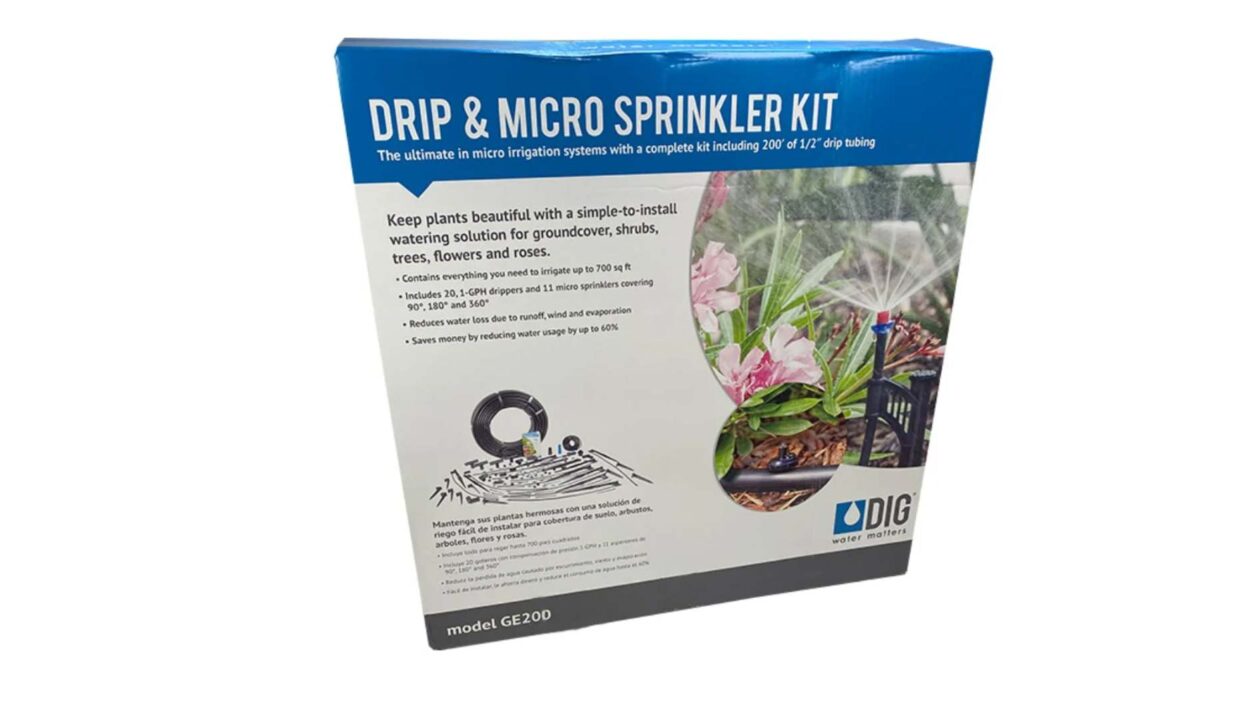
Included in this bag of goodies is a 3/4″ backflow preventer, a 3/4″ 25 PSI pressure regulator, a 3/4″ swivel adapter, 200 feet of premium 1/2″ drip tubing, 11 micro sprayer assemblies with 13″ stakes, 20 PC drip emitters, and micro tubing with barbs. With a PC drip emitter flow rate of 1 gallon per hour and a micro sprayer flow rate of 14 gallons per hour, the total flow rate for this kit is 174 GPH (2.9 GPM).
Let’s get something straight: this isn’t the lazy route. Let’s chalk it up as a timely resolution. A major keystone of drip irrigation is conservation – it saves water, money, and time. That brings us to the other keystone of deciding what is best for you. If you think curating your new drip irrigation system from scratch is the way to go, let’s continue to see what exactly you’d be getting into.
Constructing The Ultimate DIY Drip Irrigation System
Installing a drip irrigation system is no more challenging than a rotor-fashioned system. In fact, a drip line’s flexible and cooperative tubing doesn’t need to be buried like other irrigation lines. Drip lines should be installed after the plants have been planted in the ground so the tubing can weave between the plants at a proper distance.
Tubing
The type of tubing you should use stems from your overall goal. If the intended use of the drip irrigation system is for rows of crops in a garden or trees in an orchard, factory-made tubing with its evenly spaced emitters is a perfect choice. However, if you are designing a system for a landscaped yard that has plants at various intervals throughout the entire yard, emitter tubing that requires manual placement of emitters is the optimal road to travel.
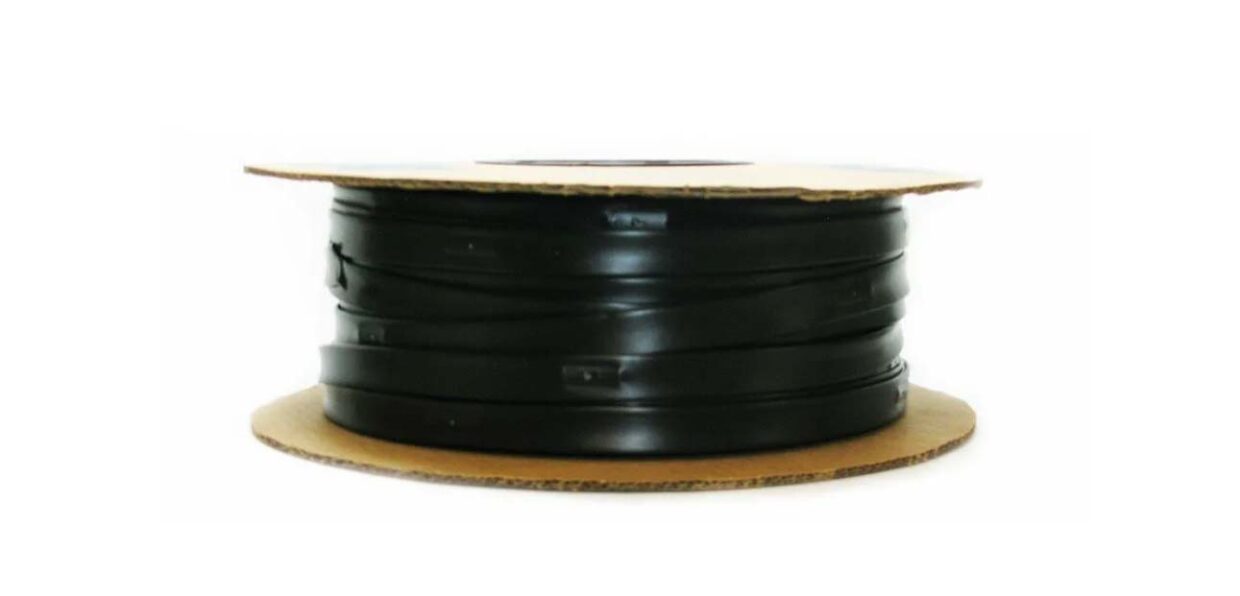
If you’re the type to landscape your yard in a different manner each year, soaker tubing may be the best decision since it is something that requires annual replacement. The size of your irrigation zones will also factor into this equation. One of the most important things you should do is draw out a plan and then use string to determine the proper lengths of the tubing you’ll need.
In a nutshell, there are several essential components in a drip irrigation system. Each system will require the main waterline, control valves, pressure reducer, backflow prevention, pressure regulator, filter, various tubing adapters and fittings, air vents, drip tubing, emitters, filters, and an end cap or flush valve.
Main Water Line
This is the beginning of a system. In the case of a landscaped area around a residence, the mainline is usually alongside the house and extends from the foundation or outside wall of the home. The main water line can also be run underground to a central point within your irrigation layout.
Control Valve
This component controls the flow of the water from the main water line or throughout the various areas of the irrigation system. Control valves may be operated manually or, with a bit more expense, may be automatic. Depending on the type of system that is installed, there may be one or more control valves.

Pressure Regulator
Since many systems operate with maximum efficiency at lower water pressures, a pressure regulator may be required to help lower the water pressure coming from the main water line outside of a home.
Backflow Preventer
Emitters sit directly on top of soil or beneath the soil. If water that has been emitted into the soil seeps back into the drip line and up to the mainline, it may very well contaminate your entire water supply. In order to prevent water contamination in your main water supply, it is of the utmost importance that your drip irrigation system has a backflow suppressor.
Drip Irrigation Filter
A filter with a 150-mesh or 200-mesh screen will help prevent the buildup of different minerals and particulates in the emitters. Filters will also protect the valves on your drip irrigation system.
Air Vent
In order to keep air out of the emitters during the times that the system is shut down, an air vent should be installed at the drip tube’s highest point.
Drip Tube Fittings And Adapters
This equipment includes tees, couplings, adapters, and ells. These are the components used to connect the drip tubes to each other and to control valves or the main waterline.
Pro Tip: The fittings should be the correct size for the tubing you use. In many cases, using the incorrect size fittings will result in a blowout.
End Caps And Flush Valves
In order to keep the water from just flowing out of the end of the drip tubing, it is necessary to have a flush valve or end cap. A flush valve is simply a valve that is placed at the end of the drip tubing. It is kept in the OFF position until the tubing needs to be flushed, which is generally once a year. An end cap is exactly what it sounds like: a cap that is screwed onto the end of the drip tubing.
Drip Emitters
Within the list of equipment needed for a drip irrigation system, we’ve saved the best for last. Emitters are one of the most important arteries of the drip irrigation system. Emitters are basically small plastic valves that are installed along the length of the drip tube. The sole purpose of an emitter is to keep a continuous and uniform flow of water near the root zone of the plant.
There are two primary categories of emitters: pressure compensating emitters and turbulent flow emitters.
- Pressure compensating emitters are used in situations where there is a disparity in elevation of greater than five feet.
- Turbulent flow emitters, also known as tortuous-path emitters, are used when the irrigation area is level.
Bear in mind that all emitters provide some type of pressure compensation. However, a pressure compensation emitter, by definition, will keep the water’s flow-rate constant regardless of the water pressure. For instance, a pressure compensation emitter should keep water flowing at the same rate whether it is at a pressure of 1.0 bar (15 PSI) or 3.0 bars (45 PSI).
Rules Of The Rows
When constructing your drip irrigation system, there are a few things to consider, the first being the length of your mainlines and lateral lines. Regardless of anything else you might learn about drip irrigation, remember that the laws of physics always apply. This is incredibly crucial when calculating the length of your mainlines and lateral lines. As a rule, the overall length of both cannot exceed 120 meters (400 feet).
Typical sizes for mainline and lateral lines can vary, but the size-to-flow guidelines are relatively standard across all drip irrigation systems.
Drip tube length is another consideration to factor into the overall design of the irrigation system. The overall length of the drip tube cannot be more than 60 meters (200 feet) from the water’s point of entry to the end of each tube.
How To Assemble A Drip Irrigation System
The installation of a basic drip irrigation or micro-sprinkler system is relatively simple. The first step is to design your layout based on what you’ll be using the system for. Once you’ve acquired the proper equipment, you can begin assembling the system. What follows assumes that you have the correct tools and equipment and are familiar with it.
- Attach the vacuum breaker to the pressure regulator. This will keep water from backwashing into your home water supply.
- Connect your filter to the pressure regulator then attach the hose swivel to the opening on the side of the filter. Connect everything to your hose bib.
- Lay your tubing out according to your design. Be sure that emitters are positioned so that they are close to the root zone of each plant.
- Place ground stakes at intervals along your drip tubing to secure it into place. The hook at the top of the stake should fit over your drip tube.
- Once all of your tubing has been laid out, install the correct sized pipe fittings and make sure to tighten them then attach an end clamp, end cap, or flush valve at the end of your line.
- Test the system. If you see problems within your system, this will be the time to fix them. Following are some simple troubleshooting techniques that can be used to fix a drip irrigation system.
Obviously, this is a very basic installation, but the same principles apply to larger jobs. It’s a matter of careful planning and attention to detail. For a more advanced How-To reference, swing by our Step By Step Drip Irrigation Installation Guide.
Drip irrigation is a tried and true method for maximizing the efficiency of delivering water to your plants. Once you’ve planned, installed, and used your drip irrigation system, you’ll be on your way to more effective and cost-cutting irrigation. Whether you’re cultivating five acres of Roma tomatoes or looking for a more efficient means of watering your container plants, the pros at Sprinkler Warehouse have the answer to all your drip irrigation dilemmas.
FAQ
What should I do if no water is coming out of my drip system’s emitter?
Depending on how clogged it is, you should clean the emitter or replace it.
Is something wrong with my drip system if the tubing or emitter has blown off?
Tube or emitter blow-off is caused by too much pressure in the system. The simplest remedy is to add a pressure regulator to the line that is causing the problems.
How do I fix leaks between my fittings or between pieces of tubing?
First, check the connections and ensure that they are tight. If you’re dealing with a small leak in the pipe, you can use a dresser coupling to fix the leak. For larger leaks, you may need to cut out the damaged section of the line, insert an additional length of the drip line, and use fittings to seal the connectors.
Related Articles
Drip Irrigation Installation Guide



